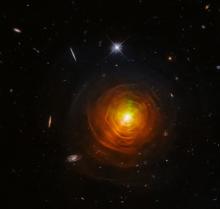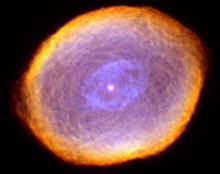Listen to today's episode of StarDate on the web the same day it airs in high-quality streaming audio without any extra ads or announcements. Choose a $8 one-month pass, or listen every day for a year for just $30.
You are here
Markab
One of the signs that autumn is nigh is the appearance of Pegasus in the evening sky. It’s low in the east as night falls. Its most prominent feature is the Great Square — four moderately bright stars that outline the body of the flying horse.
The brightest of the four is Alpheratz, at the lower left corner of the square in early evening. The star at the opposite corner is Markab — from an Arabic name that means “the shoulder of the horse.”
Astronomers have been a little confused about Markab. They know that it’s bigger, heavier, and much brighter than the Sun. They also know that it’s around the end of its “normal” lifetime — the long span when it fuses the hydrogen in its core to make helium.
At the end of that phase, a star begins fusing the hydrogen in a thin shell around the core. The core shrinks and gets hotter. That eventually ignites fusion in the helium. As those changes take place, the star’s outer layers expand and cool, turning the star from a “dwarf” to a “giant.”
And that’s where the confusion about Markab has come in. Researchers have classified the star in different ways. The most recent work says it’s at the end of its main phase of life. Some older studies have said it’s just moving into the next phase, as a sub-giant. And still others have put it in the full-on giant phase.
Regardless of which one is correct, there’s no doubt that big changes are taking place in the shoulder of the flying horse.
Script by Damond Benningfield






